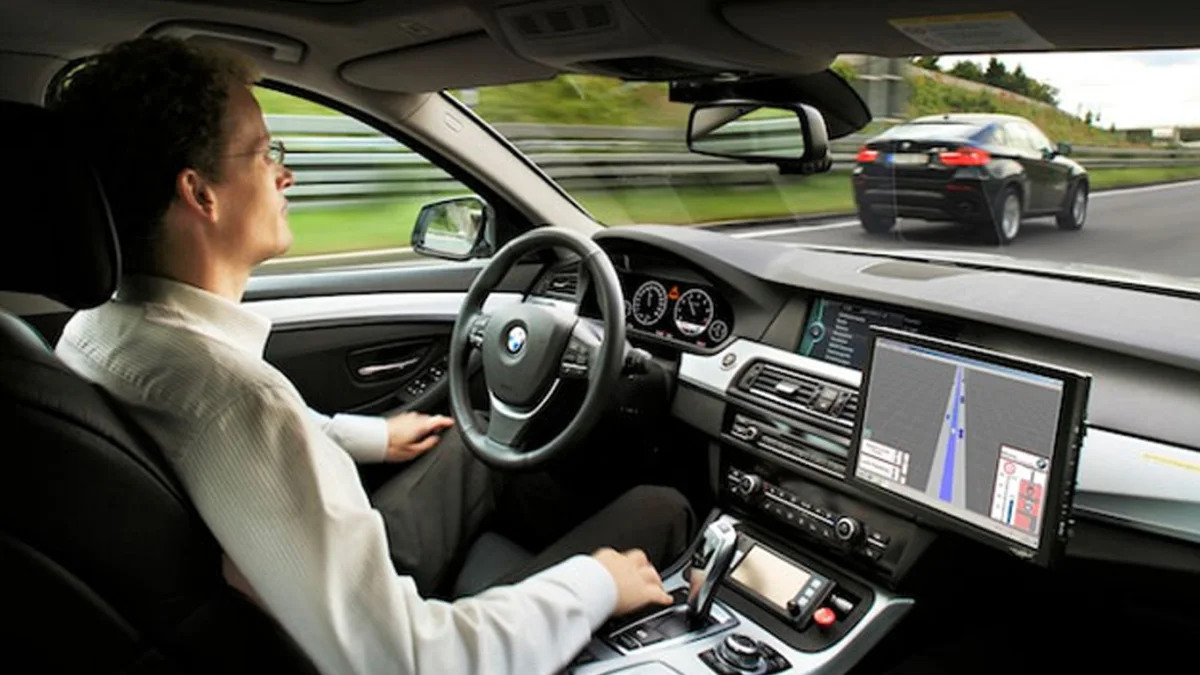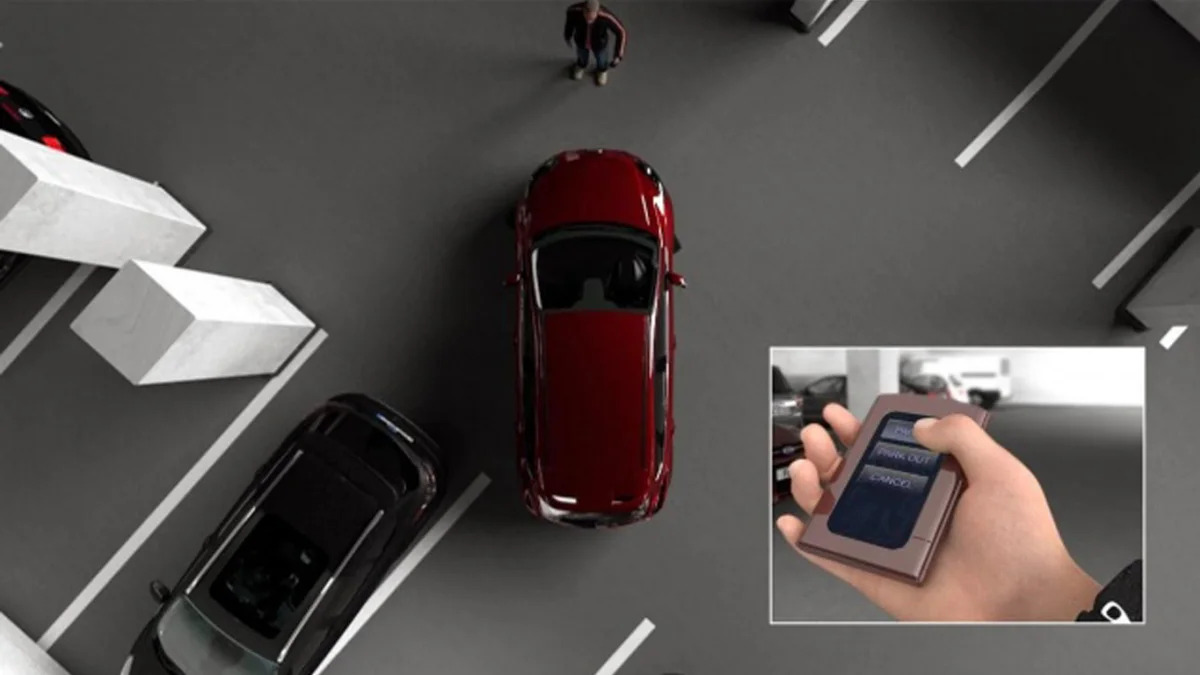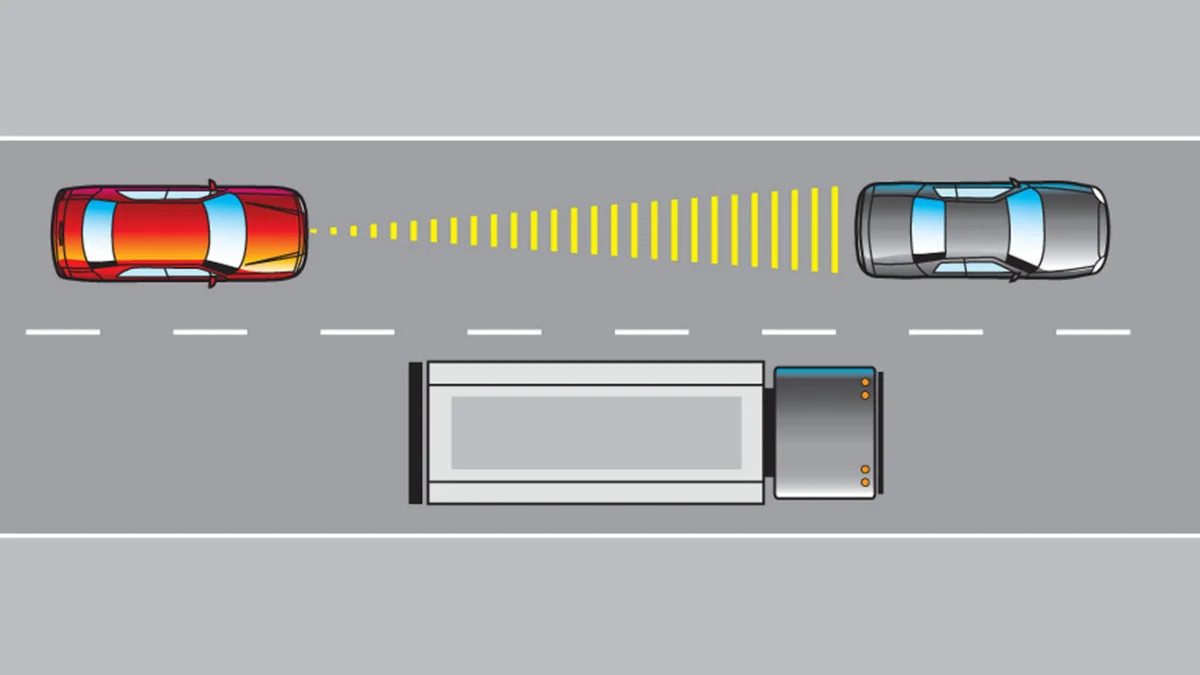New Tech Means Self-Driving Cars Are Already Among Us

-

- Image Credit: BMW
We have cars that can find and angle themselves into the perfect parking spot. We have cars that communicate with drivers, alerting them to unseen cars in neighboring lanes, or when an object or person suddenly appears in front. If the driver doesn't act, often the car does. These features aren't just convenience, they could save thousands of lives each year. A study by the University of Michigan found that active-safety features on all cars could reduce car accidents by 82 percent.
Head through to see what self-driving capabilities you can buy today. We’re closer to autonomous driving than you may think. -
- Image Credit: Ford
Parking Assist
Several automakers, including Nissan, Toyota, Honda and Ford all have parking assist systems with varying levels of autonomy. Parking assist programs use a series of radar sensors and cameras usually mounted to the outside the vehicle to angle a car into its spot. The car's onboard computer controls just the steering, while the driver controls the gas pedal, brakes and gear.
This system could soon get even more autonomous. Ford's European division recently unveiled Fully Assisted Parking Aid, which takes complete control of the vehicle, angling cars into diagonal or perpendicular parking spots. The driver can even get out and watch as the car parks itself. Volvo has an even more advanced system in the works, developing cars that can drop their drivers off at the curb, find a parking spot, then come back and pick them back up. -
- Image Credit: Chrysler
Adaptive Cruise Control
Adaptive cruise control can benefit both long-haul road trippers and city drivers. The system allows drivers to set the distance they want to remain behind the car in front of them, and the car will automatically adjust its speed to do so.
The Honda Accord PHEV uses adaptive cruise control to save on energy while in Eco mode. Automakers like Subaru, Mazda, Kia, Chrysler and Ford all have some sort of adaptive cruise control that allow drivers to stay a safe distance from the cars ahead of them without input from the driver. Like all cruise control systems, you just need to steer and keep your eyes open. Chrysler's system can bring the car to a complete stop, which can help make stop-and-go morning traffic commutes more fuel efficient and less tedious for the driver. -
- Image Credit: Volvo
Blind Spot Alert
The blind spot is an area of the road next to a car that is invisible to drivers when looking in the rearview and side mirrors. Cars driving in another’s blind spot are involved in 9 percent of all crashes, according to the National Highway Traffic Safety Administration.
Vehicles equipped with blind-spot alert can now sense other objects around themselves. Subaru's latest generation of active safety features, known as EyeSight, uses cameras which can see in color to scan 23 feet around the vehicle for dangers. All of the sensors and cameras are located on the inside of the vehicle, so that the delicate equipment isn’t exposed to the elements. Another type of blind spot monitoring is Honda's LaneWatch. A camera mounted underneath the passenger-side mirror is used to project a view of the car's blind spot along with distance markers on the main infotainment screen. -
- Image Credit: Toyota
Collision Avoidance Systems
Lane departure warning and collision avoidance systems have largely been the province of upscale automakers or top trim levels, but that's beginning to change. The National Transportation Safety Board has suggested that safety features such as brake assist and lane departure should be made standard on all new cars and trucks.
Last year, Toyota released a whole newly updated suite of safety systems aimed at protecting pedestrians. First, the car will alert the driver when it senses an object suddenly in the road. If the driver doesn't respond, the car takes over the brakes and automatic steering to stop or at least swerve out of the pedestrian's path. General Motors also offers the Safety Alert Seat, which vibrates to warn the driver of potential dangers, such as wandering out of a lane.



